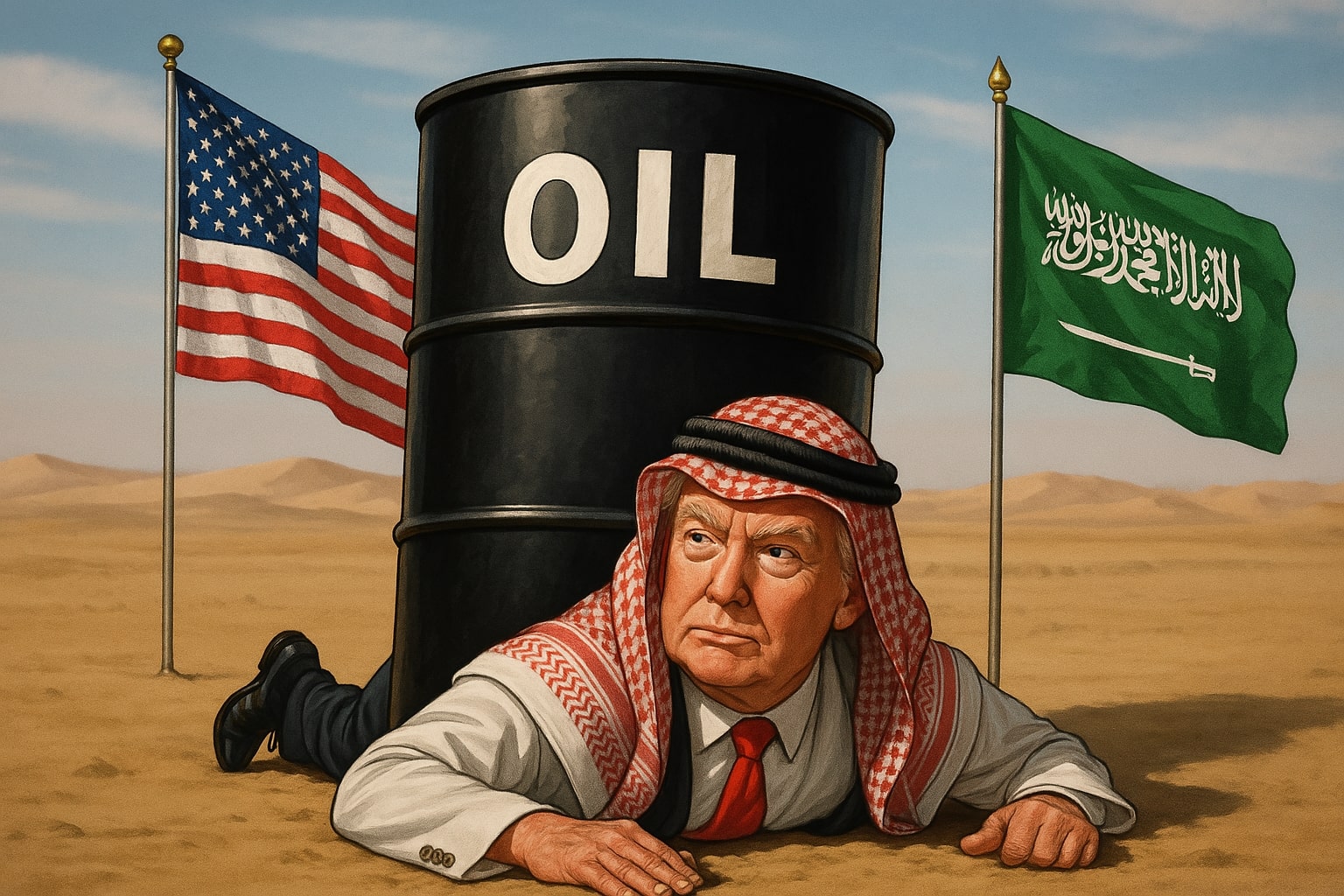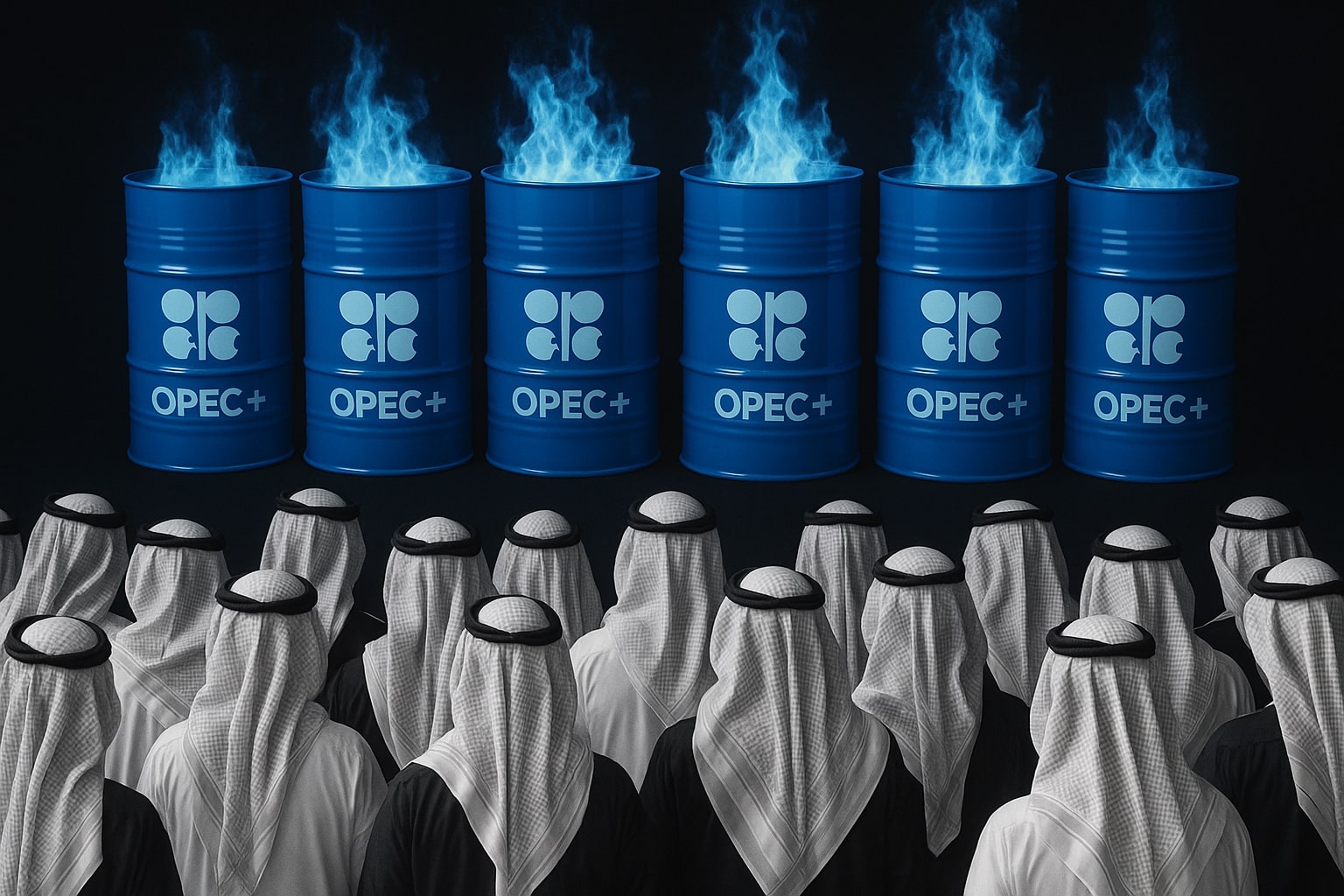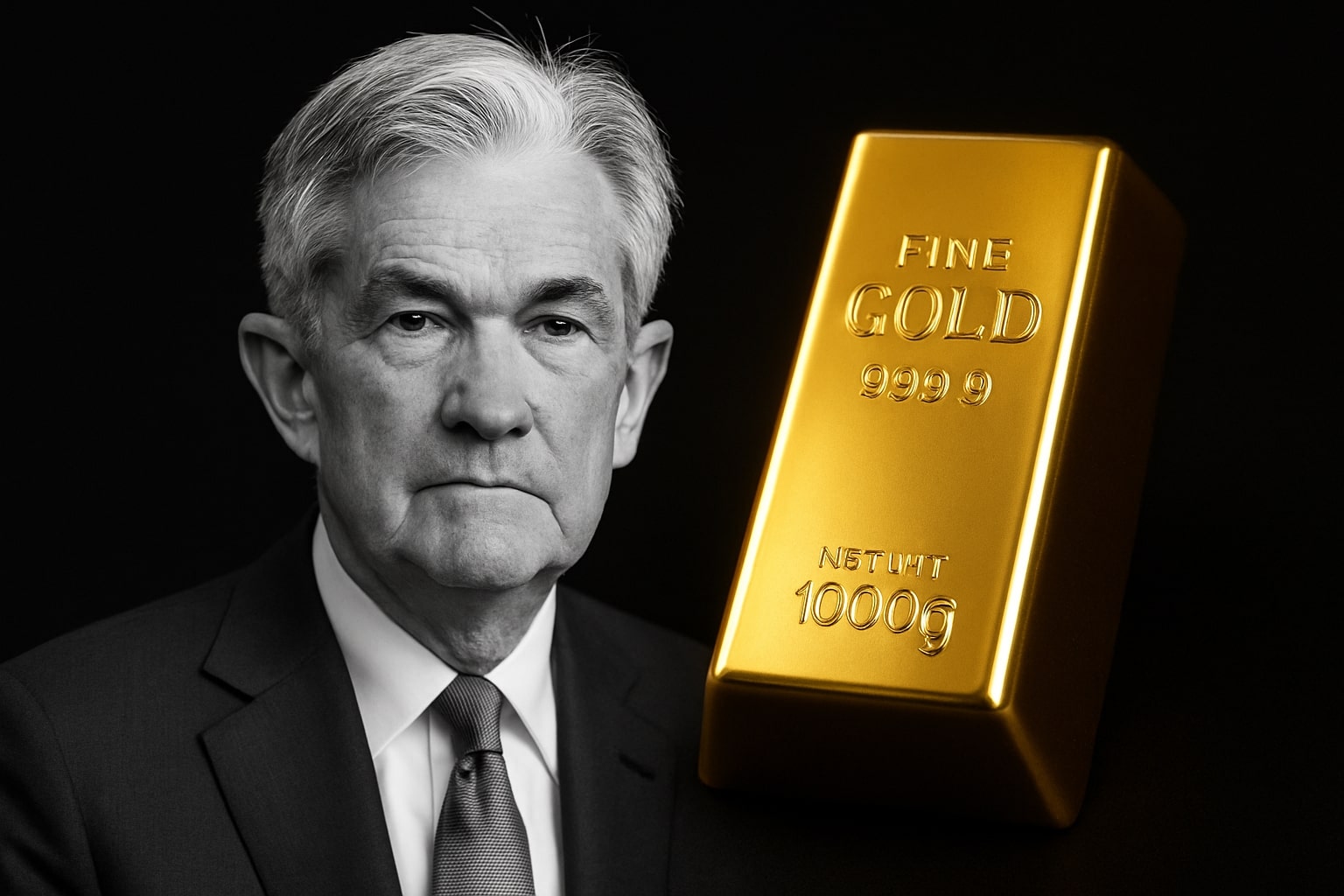Saudi Arabia's Oil Revenue and Vision 2030: A Precarious Path Amid Falling Prices and Trade War Tensions
Saudi Arabia, long reliant on oil revenue for its economic sustenance, now faces unprecedented pressures as crude prices tumble to near four-year lows. The kingdom’s ambitious plans to diversify its economy through its Vision 2030 initiative are now under significant strain, with the latest geopolitical developments and economic shifts threatening the stability of its financial model. With oil at just above $60 per barrel, the kingdom is grappling with a twin challenge—lower revenues from oil exports and escalating trade tensions triggered by the U.S.-China tariff war.
The Oil Price Collapse: A Major Blow to Saudi Revenue
Oil prices have plunged significantly in recent weeks, driven primarily by fears of a global economic slowdown, exacerbated by the U.S.-China trade war. Brent crude, a global benchmark, has fallen to below $65, and U.S. crude has slid to just under $60, levels not seen since 2021. These price drops present a stark reality for Saudi Arabia, whose fiscal health is intricately tied to oil revenues. Saudi Arabia’s government needs oil prices above $90 per barrel to balance its budget, according to estimates from the International Monetary Fund (IMF). With oil prices now hovering in the low $60s, the kingdom is facing a substantial revenue shortfall.
In 2024, oil generated 62% of the kingdom’s government revenue, and with Brent prices dipping well below the $65 mark, this could mean a shortfall of billions of dollars in expected revenue. Saudi Aramco, the state-controlled energy giant, is also expected to lower its dividends by a third this year, exacerbating the financial challenges for the government and its Public Investment Fund (PIF), which is steering the Vision 2030 project.
Vision 2030: Ambitious Goals Amidst Budgetary Pressures
Vision 2030 is Saudi Arabia’s landmark initiative to diversify its economy away from oil dependency, investing in everything from futuristic cities like NEOM to cultural projects and sporting events. However, with oil prices falling, the kingdom may be forced to recalibrate its strategy. While some of the Vision 2030 projects are funded off-budget, the need for mammoth infrastructure investments, many of which are oil-dependent, now faces significant uncertainty.
The PIF, which is critical in funding Vision 2030, has already been stretched thin with oil-generated capital. The fund, valued at $925 billion, is expected to lean further into debt financing, with forecasts estimating a $100 billion increase in Saudi Arabia’s public debt over the next three years. This could further strain the kingdom’s financial position, particularly if oil prices do not recover in the short to medium term.
The Impact of U.S.-China Trade Tensions on Saudi Arabia
The escalating trade war between the U.S. and China has added another layer of uncertainty. U.S. President Donald Trump's recent announcements of reciprocal tariffs between the two countries have triggered a sharp fall in oil prices, as market participants anticipate a global economic slowdown. Trump’s tariff threats have particularly targeted Chinese imports, which could ripple through global trade and disrupt demand for Saudi oil.
Saudi Arabia, already dealing with the economic fallout of lower oil prices, now faces the risk of a prolonged global trade war that could affect oil demand even more severely. According to Karen Young, a senior research scholar at Columbia University's Center on Global Energy Policy, the kingdom may have to delay or scale back some of its Vision 2030 projects in the face of this new reality.
Debt Financing: A Double-Edged Sword for Saudi Arabia
With the prospect of lower oil revenues, Saudi Arabia has turned to debt financing as a solution to fund its Vision 2030 goals. The kingdom is already among the largest emerging market debt issuers, raising significant amounts through bonds and loans. The government has raised $14.4 billion in bonds this year alone, while PIF has borrowed billions to fund its investments. However, the rising debt load introduces risks, especially if oil prices remain depressed for a prolonged period.
The kingdom’s public debt surged by 16% in 2024, reaching over $324 billion. This presents a challenge to the government, which will have to balance its fiscal policies carefully to avoid debt spiraling out of control. The IMF and economists agree that Saudi Arabia’s fiscal position could be increasingly precarious if oil prices fail to recover in the coming months.
Geopolitical Realignments and Market Reactions
In addition to the economic pressures from the trade war, Saudi Arabia is also dealing with the broader geopolitical shifts under U.S. President Trump’s administration. Trump’s demands for lower oil prices and investments from Saudi Arabia into the U.S. economy are adding to the tensions. His controversial stance on OPEC+ oil production has raised concerns within the kingdom, where maintaining oil price stability is key to the national budget.
The kingdom is also contending with the broader effects of global instability, with rising tensions in the Middle East, particularly regarding U.S. involvement in the region. As geopolitical risks rise, investors are likely to turn to safe-haven assets such as gold, which has already seen a 15% increase in price this year.
The Road Ahead for Saudi Arabia
Saudi Arabia’s fiscal future remains uncertain, as it seeks to balance its oil-revenue dependence with the diversification goals of Vision 2030. With the country relying heavily on oil to fund its economic transformation, the continued fall in crude prices complicates these efforts. The government has already signaled that it will need to rely on debt financing to bridge the gap, but this comes with risks.
Saudi Arabia may have to reconsider its planned infrastructure projects, possibly delaying or scaling them back to preserve fiscal stability. The country is likely to adjust its economic strategy to accommodate these challenges, possibly delaying some projects or prioritizing others based on available funding.
Moreover, with the growing concerns over global trade wars and U.S. policy towards oil prices, Saudi Arabia faces a precarious situation. The kingdom will need to adopt flexible fiscal policies, balancing the demands of Vision 2030 with the necessity of maintaining economic stability amidst falling oil prices and geopolitical instability.
Outlook for Saudi Arabia
While the outlook is uncertain, Saudi Arabia remains committed to its Vision 2030 agenda. The challenges posed by the oil price slump and the growing geopolitical tensions require a careful balancing act. However, with the low debt-to-GDP ratio and the backing of global lenders, Saudi Arabia has some leeway. The coming months will reveal whether the kingdom can navigate these challenges successfully or whether it will be forced to scale back its ambitious goals.




















